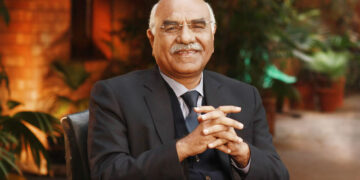
It’s been nearly 11 months since the killing of Osama bin Laden and almost 11 years since 9/11 thrust Al Qaeda to the forefront of US national security.
Since then – in fits and starts after 2001, and at an accelerated pace in the last five years – the United States has been remarkably successful in degrading Al Qaeda’s operational capacity and splintering the organisation, culminating in the raid in Abbottabad last May.To state the obvious, all this is good news. The US homeland is safer, the world is a better place, and a reduced jihadist threat is allowing the United States to make a shrewd strategic pivot to the Asia-Pacific region.
But what is less appreciated is that while the threat to the homeland is diminished, the demise of “Al Qaeda central’’ is coinciding with a resurgence of radical extremist political activism. The two trends are connected, and present a growing challenge to US interests.The fracturing of Al Qaeda has reversed Bin Laden’s signal achievement: defying the truth that all politics is local and focusing the efforts of the most extreme elements on attacking the “far enemy,’’ the United States.
In the absence of a leader, these groups, buttressed by the dynamics of the Arab Awakening and the US withdrawals from Iraq and Afghanistan, have re-entered domestic politics throughout the Middle East and South Asia. Their activities add a layer of complexity, uncertainty, fragility and danger to the region’s trajectory and create enormous problems for US foreign policy.Osama himself was aware of this development. According to reports of correspondence taken from his Abbottabad compound, Bin Laden fretted constantly that his operatives were too eager to direct their activities to local dynamics rather than the overarching anti-US cause.
These tensions – and the temptation among Qaeda operatives to strike softer local targets – sharpened as the US vise tightened and the operational control of an increasingly isolated Bin Laden weakened.The killing of Bin Laden, continued US pressure, and the ascension of the unpopular Zawahri to leadership have reinforced the shift of Al Qaeda affiliates toward local issues, making the various regional branches less receptive to dictates from Zawahri, an Egyptian.
This new focus on the local is driving a resurgent influence for the most radical elements in areas in which Al Qaeda had in recent years become deeply unpopular. The US withdrawal from Iraq intensifies extremist opposition to the Shia Prime Minister, Nouri Kamal Al Maliki, as it’s more clear than ever that it’s his sect, not his ties to Washington that fires the radicals.In Mali, the increased local activities of Al Qaeda in the Maghreb have contributed to a deteriorating security environment that allowed the long-simmering Tuareg rebellion to strengthen and fueled the discontent that led to last week’s coup. For the United States, which had promoted Mali as a regional success story of flourishing democracy, this is a troubling development.
The return of extremists and their increasing influence in North Africa has surprised and disoriented even the region’s moderate Islamists, with the electoral success of the Salafist Al Nour Party in Egypt challenging the Muslim Brothers and Tunisia’s Ennahda-led government struggling to prevent Salafist influence from deterring much-needed foreign investment.An influx of returning jihadists in Libya is injecting a radical ideological element to a transition already fraught with ethnic and tribal tensions. Here, as in South Asia and the Sahel, the localisation of the most extreme elements is changing the game.
It is in Syria where this dynamic is most acute and most challenging for the United States. The uprising against the Assad regime is in many ways a strategic plus for the United States, especially given the close cooperation between Damascus and Tehran. But sectarian dynamics in Syria make it very difficult for the United States to exploit or even manage its advantage.
The inability of the Syrian opposition to unite or gain purchase among ethnic and sectarian minorities results to a great extent from the perception that the strongest elements of the opposition to the Alawite Shia Bashar Al Assad are Sunni extremists. Minority groups fear they will treat them even more harshly than Assad has treated much of the Syrian population.
And the very fractiousness of the opposition that extremism fosters is increasingly allowing extremist elements to define the anti-Assad forces – fueling further fractiousness and, in a vicious cycle, creating even more openings for extremists.Zawahri’s call for jihad against the Assad regime – Al Qaeda’s first such exhortation that is not against the United States or a close US ally – is both a testament to and a driver of these local dynamics. All of this makes rhetorical or military support for the Syrian opposition from the United States, Turkey or Saudi Arabia very difficult, and contributes to the stalemate we’re now seeing.
America’s very success in the war on Al Qaeda has created a paradox: While the most extreme elements have shifted their focus away from the United States, the complexity of the challenge that they pose for US foreign policy has only increased. The war on terror may be winding down, but managing its aftermath is just beginning. – Khaleejnews












